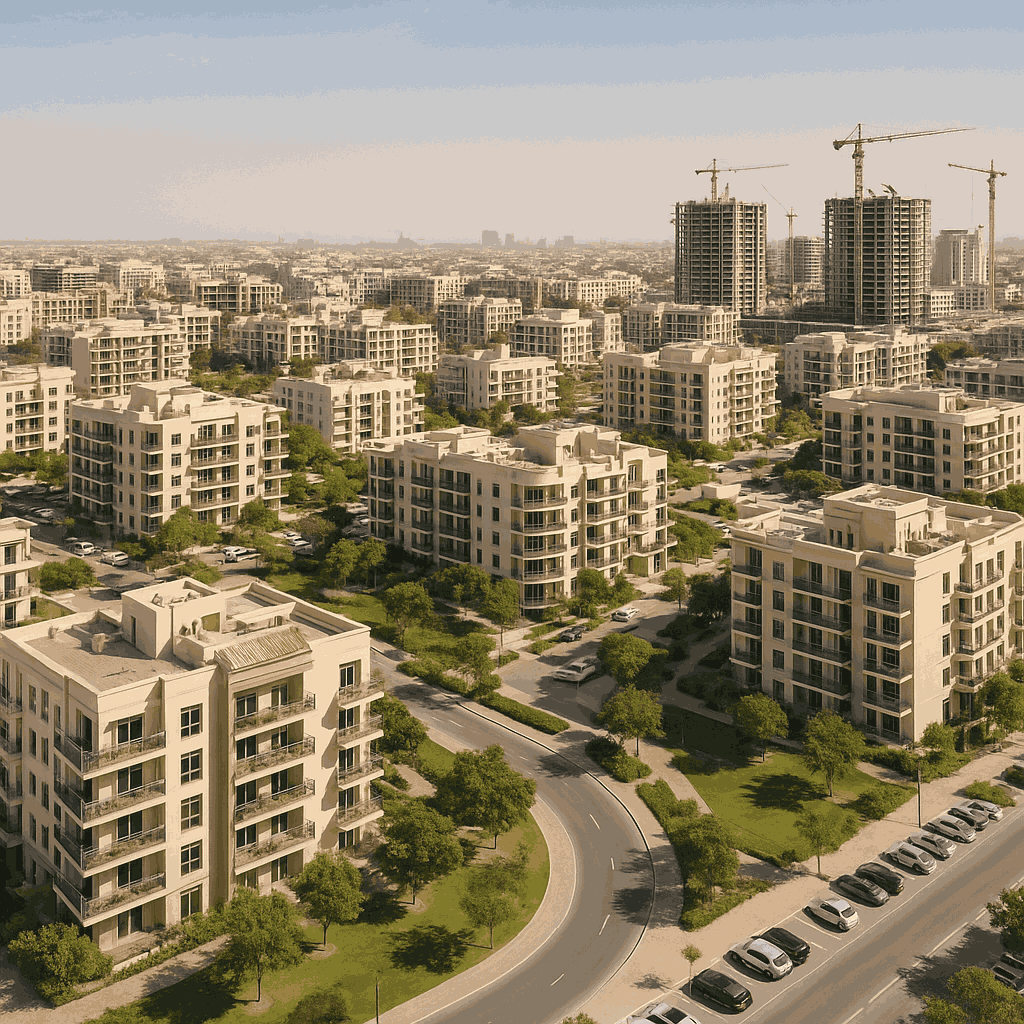Dubai’s real estate market continued its strong performance into the second quarter of 2025, posting an impressive 20.5% year-on-year surge in property prices. This upswing is largely attributed to increased interest in affordable communities, driven by population growth, strong investor confidence, and a return of foreign buyers.
Affordable Communities Are Fueling the Surge
Key Performing Areas with High Growth
Affordable communities like Jumeirah Village Circle (JVC), Dubai South, Dubai Silicon Oasis, and International City have recorded the highest increases in price growth. These locations have seen a boom in transaction volumes, with JVC alone recording a 24% year-on-year price increase due to its appeal to first-time homebuyers and investors seeking high rental yields.
The Rise of Mid-Income Buyer Demand
Dubai’s push toward affordable housing is finally bearing fruit. Projects in Dubai South and Al Furjan are meeting demand from mid-income residents priced out of premium locations. Developers have responded with tailored payment plans, post-handover options, and freehold offerings in traditionally leasehold areas.
Investor Sentiment Remains Strong
Global Buyers Return to Dubai
Thanks to relaxed Golden Visa regulations, foreign nationals are once again showing interest in the emirate. The number of property purchases by non-GCC investors increased by 17% in Q2 2025 compared to the previous quarter. Buyers from India, Russia, the UK, and China have returned, lured by tax advantages, stable ROI, and freehold ownership rights.
Rental Yields in Affordable Areas Outpace Prime Zones
In places like International City and Dubai Silicon Oasis, average rental yields are exceeding 7.5%, significantly higher than prime districts like Downtown Dubai (4.1%) and Dubai Marina (4.4%). The affordability factor has boosted tenant demand, reducing vacancy rates and pushing rents up by 15% in the past year alone.
Luxury Market Still Expanding, But Growth Slower
Premium Areas Like Palm Jumeirah Show Modest Gains
While affordable communities are taking the spotlight, prime districts such as Palm Jumeirah, Downtown Dubai, and Emirates Hills saw moderate growth of around 8–10% year-on-year. The ultra-luxury segment remains stable but is no longer the primary growth driver.
High-End Buyers Now Looking at Peripheral Markets
There’s growing interest in new master-planned communities outside the city core, such as Meydan, Dubai Hills Estate, and DAMAC Lagoons, where buyers get more space and amenities at relatively competitive prices.
Key Factors Driving the Q2 2025 Property Price Surge
1. Economic Recovery and Job Market Strength
Dubai’s post-pandemic economic rebound continues to provide a foundation for real estate growth. The emirate’s GDP grew by 5.4% in the first half of 2025, with strong performances in tourism, logistics, and technology sectors. This has translated into stronger domestic buying power and confidence in long-term property ownership.
2. Expo Legacy and Infrastructure Expansion
Ongoing projects like Dubai Metro’s Blue Line, expansion of Al Maktoum International Airport, and Expo City’s transformation into a tech hub have spurred real estate development and demand in the surrounding areas. These government-backed initiatives provide long-term growth potential for both residential and commercial sectors.
3. Favorable Policy Environment
Government reforms, including long-term residency permits, corporate tax exemptions for real estate investors, and digital property transactions, have made Dubai one of the easiest places globally to invest in property. These reforms have led to an increase in both volume and value of property sales in Q2 2025, especially in the secondary market.
Record-Breaking Transaction Volumes and Values
Residential Property Transactions Hit New Highs
Dubai recorded over 38,000 real estate transactions in Q2 2025, setting a new quarterly record. The total transaction value reached AED 124 billion, a 27% increase compared to Q2 2024. Notably, off-plan transactions comprised 58% of all deals, indicating sustained confidence in future developments.
Top Developers Leading the Market
Developers like Emaar, Damac, and Sobha Realty have captured significant market share. Emaar reported a 34% year-on-year increase in unit sales, while Damac’s mid-market offerings in Damac Hills 2 and Lagoons have nearly sold out due to attractive post-handover payment plans.
Outlook for Q3 and Q4 2025
Price Growth to Continue in Select Segments
Experts anticipate continued price growth in affordable and emerging communities, though at a slower pace. Limited supply in the affordable segment, along with robust tenant demand, will likely maintain upward pressure on prices and rents.
Regulatory Tightening Possible
With prices rising rapidly, regulators may step in with macroprudential measures to avoid overheating. Options may include tighter mortgage caps for investors or increased registration fees on speculative transactions. However, no official measures have been announced as of July 2025.
Commercial Real Estate on the Rise
Office space demand is also rebounding. With global companies expanding regional headquarters in Dubai, areas like Business Bay, Dubai Internet City, and Expo City are seeing an uptick in both sales and leasing inquiries. This could add further momentum to the real estate market in H2 2025.
Conclusion: Dubai’s Real Estate Resurgence is Broad-Based and Sustainable
The 20.5% increase in property prices in Q2 2025 underlines the strength and resilience of Dubai’s real estate sector. With affordable communities leading the way, supported by sound fundamentals and pro-investor policies, Dubai is poised to remain one of the world’s top real estate destinations. For buyers, investors, and developers alike, the message is clear: Dubai’s property market is thriving — and the opportunity is far from over.




